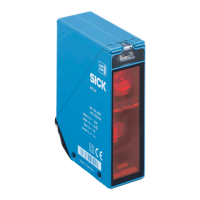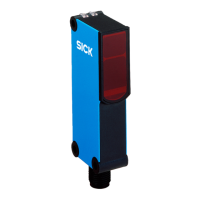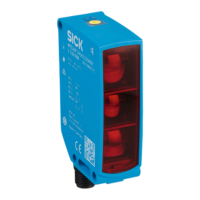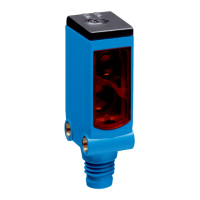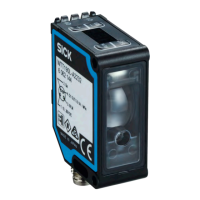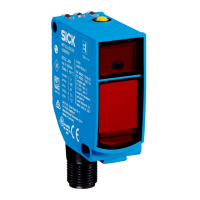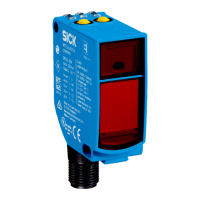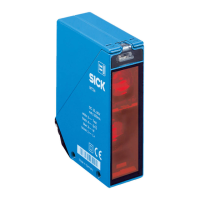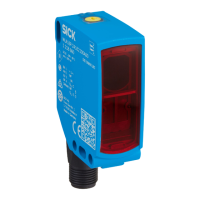2
Potentiometer: adjust‐
ment of sensing range
3
Switch: light (L) / dark
(D)
4
Switch: NPN/PNP
5
Potentiometer: adjust‐
ment of time delay t
2
6
Potentiometer: adjust‐
ment of time delay t
1
7
Potentiometer: adjust‐
ment of time stage
2
Potentiometer: adjust‐
ment of sensing range
3
Switch: light (L) / dark
(D)
4
Switch: NPN/PNP
3
Switch: light (L) / dark
(D)
4
Potentiometer: adjust‐
ment of time delay t
2
5
Potentiometer: adjust‐
ment of time delay t
1
6
Potentiometer: adjust‐
ment of time stage
3
Switch: light (L) / dark
(D)
5 Mounting
Mount the sensor using a suitable mounting bracket (see the SICK range of acces‐
sories).
Note the sensor’s maximum permissible tightening torque of 2 Nm.
Note the preferred direction of the object relative to the sensor, cf. see "Dimensional
drawing", page 16.
6 Electrical installation
The sensors must be connected in a voltage-free state. The following information must
be observed, depending on the connection type:
– Plug connection: note pin assignment: when the lid is open, the male connector
can be swiveled horizontally and vertically.
– Terminal connection: Note the permissible cable diameter of 5 to 10 mm. When
the lid is open, the M16 connector can be swiveled horizontally and vertically.
Unscrew the M16 connector and remove sealing plug. Lead voltage-free supply
cable through and connect sensor in accordance with table 2 and table 4.
Retighten M16 connector with seal so that the IP enclosure rating of the device is
ensured.
Figure 1: Opening the sensor Figure 2: Electrical connection
Only apply voltage/switch on the power supply once all electrical connections have
been established.
Explanation of the connection diagram (Tables 2-7) which are divided up into DC and
AC/DC devices:
Alarm = alarm output (see table 2 and Additional functions)
n. c. = not connected
5
MOUNTING
6
8008784.14BT | SICK
Subject to change without notice

